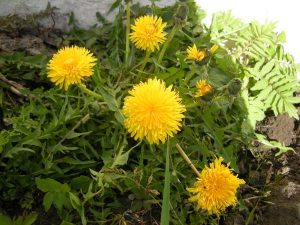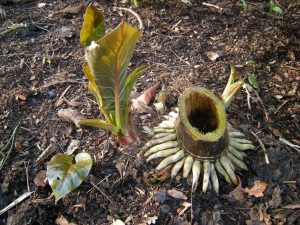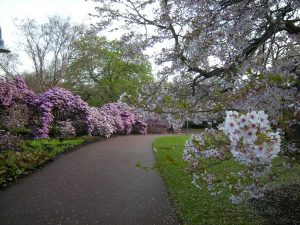The Easter weekend looms closer. Traditionally the time to take the garden seriously again. Where soil has not been prepared through the winter this long weekend allows catch up time. However the temptation to set out tender plants should be put off until next month.
The Dandelion, Taraxacum officinale, is a fine British native. Mid April and a bright sun sees roadside verges covered in the composite yellow flower heads that in a moment develop into the round seed heads loved by children and gives those of us without a watch the ability to tell the time. These dandelion clocks collectively have the ability to spread c.5000 seeds from one plant during the course of a year. Be warned; that is potentially a job for life weeding the progeny out of the borders.
Where it is present in the more manicured garden the deep tap root can be a problem. If not completely removed the vegetative buds will come to life and multiple shoots will arise. Potentially doubling the number of seeds blowing in the wind.
Another plant sending up new shoots is Cardiocrinum giganteum. The burnished bronze leaves are unfurling with the increase in soil temperature and longer day length. The bulb strengthens and develops over 5 – 7 years to reach flowering size for a spectacular display in late June. The image shows the remains of last years flower stem, the plant being monocarpic dies after flowering. The shoots next to this are sprouting from young bulbs growing as offshoots.
The Garden is open 10.00am until 7.00pm daily. A visit is worthwhile to appreciate the visions and vistas and savour the sights and scents of the plant kingdom.



